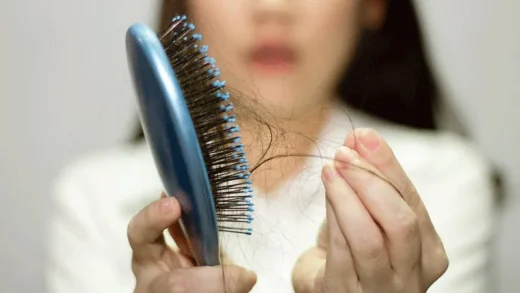Shock Loss: What is?
Today’s technology is advancing and operations are becoming easier. A hair transplant is also a very easy operation. With the developing technology and medicine, hair transplantation procedures are performed with new methods. After the hair transplantation process, situations such as hair loss called shock loss can be seen. This is a normal process.
What Is Temporary Shock Loss?
Temporary shock shedding is the temporary loss of hair strands on the transplanted hair follicles. This situation is experienced after each hair transplantation and it is a very normal situation. Hair shock loss after surgery is completed in a time such as 2 weeks.
What Is Permanent Shock Loss?
There is no permanent shock spill. This hair loss problem experienced in most hair transplantations is temporary. It is normally completed within 2 weeks. But in some cases, this process takes up to 4 weeks to complete.
Why does Shock Loss happen?
The life cycle of the hair strands we have consists of 3 stages. The first stage; is growth, the second stage; waiting, and the third stage is the spilling process. This three-stage cycle, which begins to take place from birth, is repeated in the same way throughout our lives.
Although the exact cause of the shock spill is unknown, there are two separate opinions about the cause of the process: The first of the opinions; is tissue damage and blood flow that occur due to the intervention during the operation. The roots that are removed from their places and wait outside for a while are traumatized in the meantime and put themselves to sleep under the influence of the trauma. Thus, shock loss after a hair transplant occurs.
hair shock loss
When Does Shock Loss Occur?

This happens immediately after a hair transplant. You will experience donor area hair loss for at least two weeks after the procedure. However, this process can take a month or two. How long hair shedding lasts varies from patient to patient. Shock shedding after a hair transplant on you may last for two weeks, but for another patient, it may take a month or two. However, patients are also very curious about whether they will experience a second hair transplant shock loss. However, shedding hair is experienced only once after hair transplantation.
What Is The Difference Between Shock Loss Vs Shedding Hair?
The condition called shock shedding is a process that takes place after the hair transplantation process. This problem is also referred to as shedding hair in some sources. However, the main name of the event that develops suddenly after the procedure and takes place in a short period is shock spillage.
Shock Loss 5 Months After Hair Transplant
After hair transplantation, shock loss occurs approximately in the range of 1-3 months. Since the hair will start to grow after this process, you will not have a shock loss hair transplant, especially in the fifth month. At the same time, you need to follow the instructions recommended by your doctor so that the problem of shedding after the procedure ends in the normal period.
After Hair Transplant Shock Loss Timeline
If you have decided to have a procedure for your baldness or lost hair, you may have many questions. We will answer most of the questions you may have after surgical hair transplantation treatment in this article. The most common question asked by patients during this period is “How long does shock loss last?”. Erdem Clinic has divided the healing process for you into milestones that you can predict will reach within a year.

First Day
You can observe the following:
After the hair transplant, you will be able to see the shape of your new hairline with the transplanted roots. In any case, there will be crusts around each hair follicle, so it may not look as pleasing to the eye as you had hoped. But your wounds will be small and heal quickly.
Second and 4th Days
You can observe the following:
There will be small crusting in the receiving area. These wounds will undergo red color changes until the fourth day. By the fourth day, the discomfort you feel will have decreased. On the other hand, any swelling on the forehead or around the eyes can appear in 2-3 days, while on the 4th day, it can peak. Applying hot and cold compresses to your forehead will help reduce swelling.
5th and 7th Days
You can observe the following:
The grafts are so adapted to the transplant site that at this point they can no longer be removed. The tension on the scalp should have decreased by now, but the crusts will still be visible. Sometimes there may be a slight itch, but this is usually a sign of improvement.
In a hair transplant, the donor areas will heal well at this stage and the linear appearance that occurs in the areas where the hair follicles are removed will not occur. After the first week, some patients return to work. It is also safe to continue physical activity at this point.
10th Days and 4th Weeks
You can observe the following:
The hair follicles will pass into a state of rest. As a result, the crusts of your hair grafts will begin to fall out. By the end of the third and fourth week, most of them will have disappeared. This should not be a cause for concern because shock loss is a common occurrence. You can be sure that the hair that will grow as new hair 3 months after the operation is not the small hairs you notice, but the actual root of the follicle embedded under the skin.
4th and 6th Months
The hair thickens and grows, and at the end of this period, there will be some tissue changes. At this stage, you will have additional styling options for your hair. The donor area will also be fully healed.
7th Month and First Year
80-90 percent of the hair transplanted to the patient will be elongated. You will also notice significant textural changes as your hair looks fuller and healthier.
How To Prevent Shock Hair Loss After Hair Transplant
There is no known treatment method for healing donor area shock loss. However, there are some methods to prevent shock loss hair transplant in this case.
Many patients want to get the results immediately after the hair transplant procedure. However, when they experience the problem of hair loss instead, they think that the procedure does not work. But that’s not the right thing to do. It is a normal process for you to experience shock loss after hair transplantation. It’s also part of the healing process. However, you must have a very high-quality hair transplant to prevent shock loss.
Your doctor needs to be very experienced in this procedure. If you have an experienced doctor, your doctor may analyze your hair health before the procedure. As a result, it detects the possibility of experiencing hair transplant shock loss after the procedure.
For more information about hair transplantation procedures, you can contact us by filling out the form on our hair transplantation page.
Frequently Asked Questions
How long does it take for shock loss to regrow?
Temporary shedding called shock shedding differs from patient to patient. After the 2nd month, this process ends. In the 4th month after hair transplantation, the hair strands begin to grow and the hair begins to take a certain shape. From the 6th and 7th months, the transplanted hair is expected to grow between 45% and 80%.
How do you prevent shock loss?
Shock shedding is a normal complication that occurs within the process. There is no scientifically proven method by which you can prevent this spillage problem. Therefore, the best thing you can do is to find a very experienced doctor. As a result of the analysis of your hair by an experienced and expert doctor, it can be easily determined how likely you are to shock loss.
How is shock loss treated?
There is no specific treatment for this problem. But you need to regularly use the lotions prescribed by your doctor, wash your hair regularly and protect your scalp against trauma. We recommend that you avoid movements that will damage your trading area during the healing process.